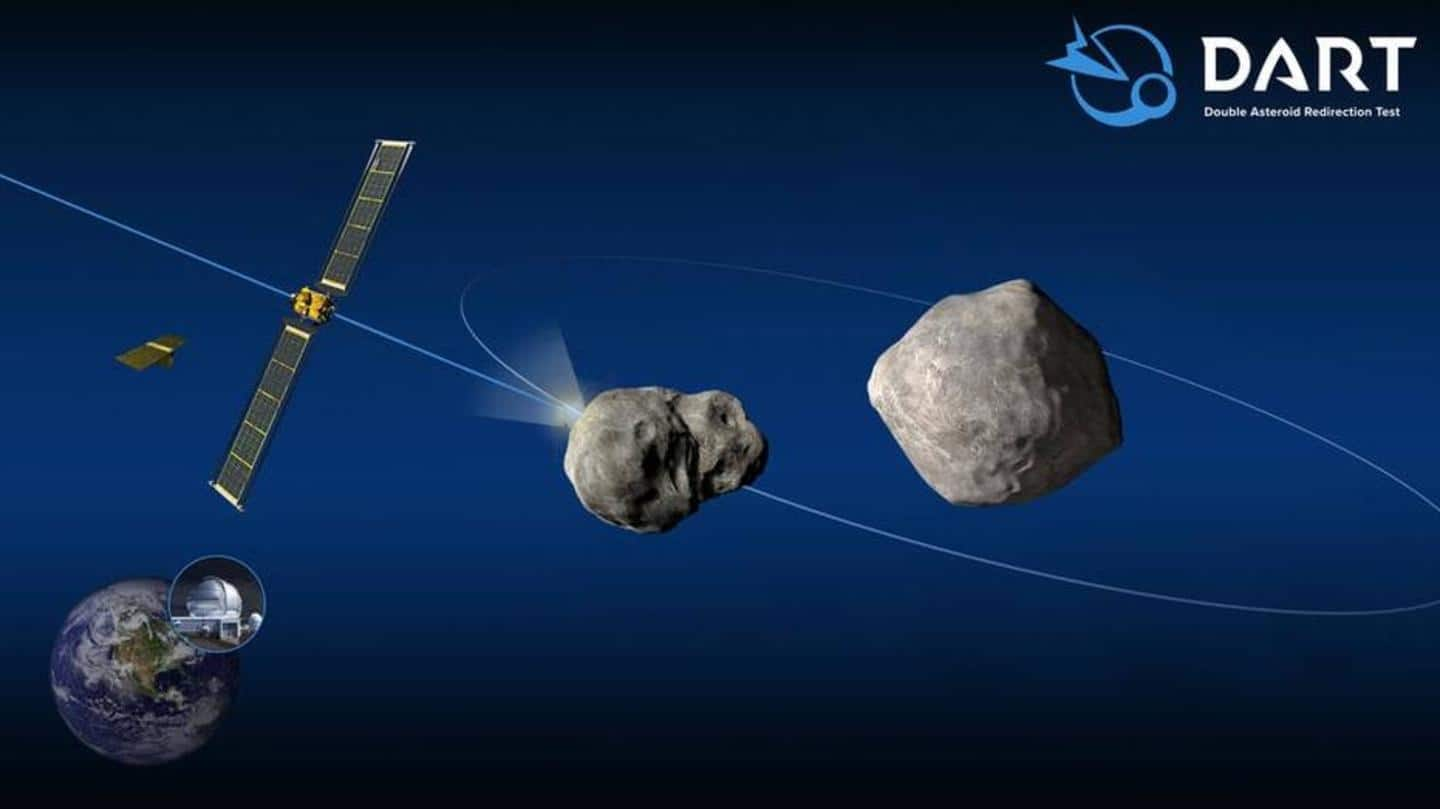
NASA's DART crashes into asteroid; completes first-ever planetary defense test
What's the story
A $344 million spacecraft just crashed into a distant asteroid and changed its trajectory. No, this is not the story of a Hollywood movie about someone saving Earth from doomsday.
Instead, it is what happened earlier today when NASA's Double Asteroid Redirection Test or DART mission hit its target, completing humanity's first attempt at altering the movement of a space rock.
Context
Why does this story matter?
NASA has accomplished something that was inconceivable before. The DART spacecraft launched in November 2021 has crashed into an asteroid.
Did the crash cause the desired impact? We don't know yet. But it doesn't matter now.
All that matters is that the first attempt at using raw kinetic energy to deflect a potentially dangerous celestial body is a resounding success.
Mission
The spacecraft's target was an asteroid dubbed 'Dimorphos'
At 7:14 pm EDT (4:44 am IST), the DART probe, a vending machine-sized spacecraft, made contact with Dimorphos, a football stadium-sized asteroid, 11 million km away from Earth.
The purpose of the mission was to deviate the course of the asteroid ever so slightly and push it into a tighter orbit using sheer kinetic force.
This is humanity's first attempt at planetary defense.
Test subject
Does Dimorphos pose any threat to Earth?
Dimorphos is the moonlet of a larger asteroid called Didymos. The Didymos system does not pose any threat to Earth.
Then why were they chosen as DART's first target? Didymos- or Dimorphos-sized asteroids are bigger theoretical threats, making them perfect test subjects.
Add to that, their relative proximity to Earth and unique configuration, and we have the ideal proof-of-concept mission.
Success or not
Is the mission a success?
This is probably the first time a NASA spacecraft had to crash for the mission to be successful.
Scientists expect to shorten the orbital time of Dimorphos by 10 minutes, but even 73 seconds will be considered a success.
The success of the mission beyond the initial impact cannot be gauged at the moment. Ground-based telescopes will determine that next month.
Monitoring
Signal from the probe stopped after the impact
The DART mission was closely monitored by mission control at the John Hopkins Applied Physics Laboratory (APL). They received second-by-second images from the probe's onboard camera.
The signal was lost when the spacecraft crashed. Images of the impact will be out in the coming days, courtesy of DART's CubeSat companion LICIACube.
ESA's Hera will conduct detailed surveys on both asteroids after roughly four years.